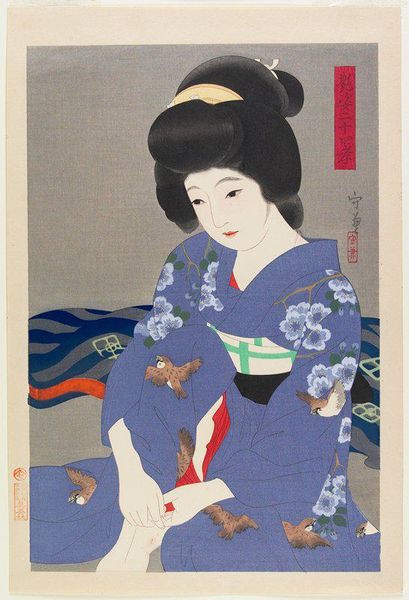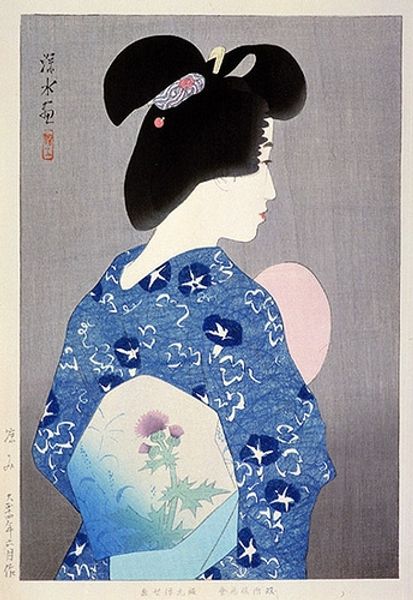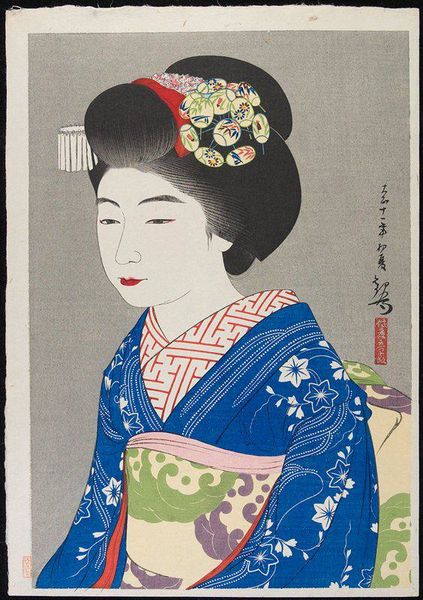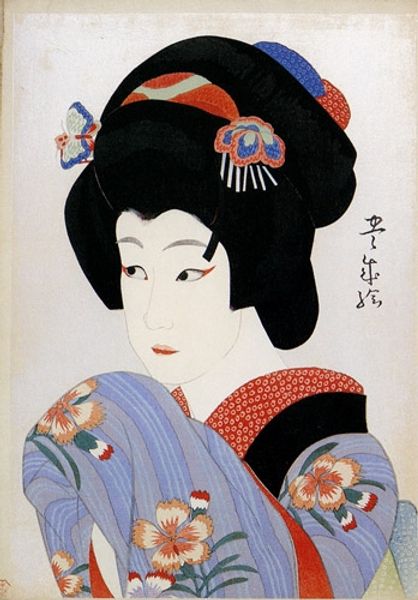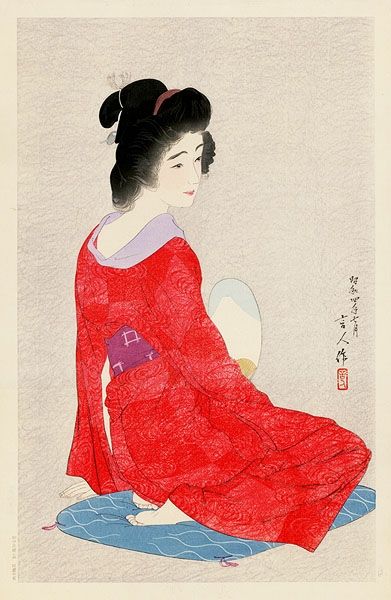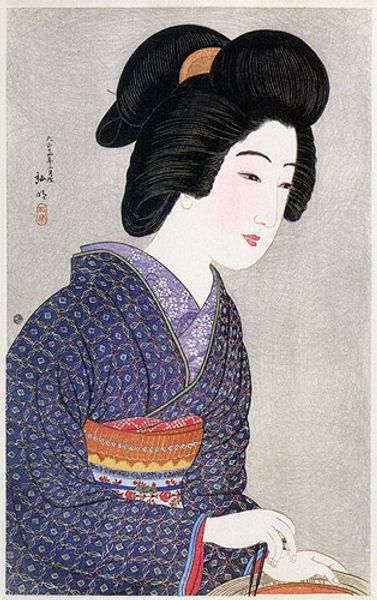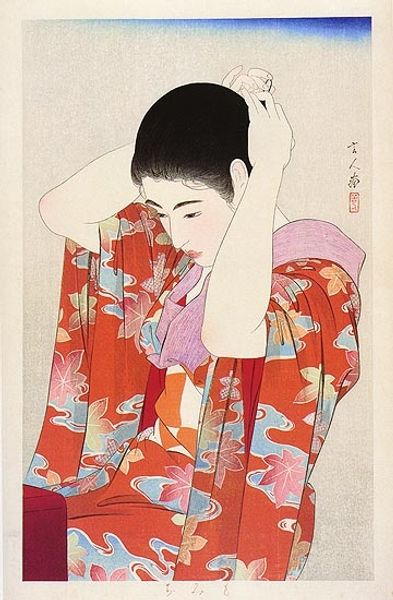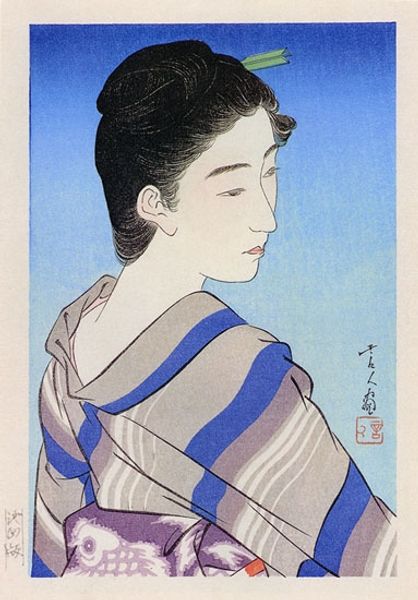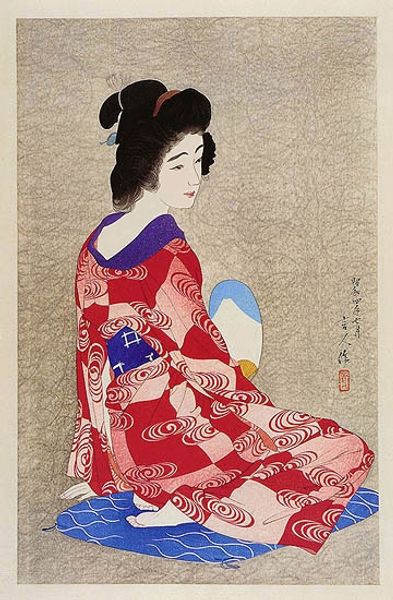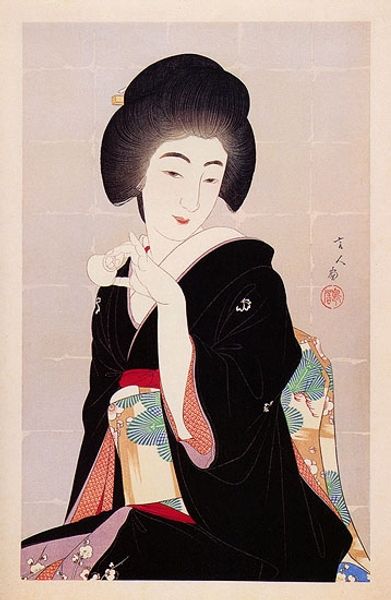
Copyright: Torii Kotondo,Fair Use
Editor: This is "Preparing Her Sash" created in 1929 by Torii Kotondo. It's a woodblock print, and I’m really struck by the woman's poised, almost serene expression, especially juxtaposed with the intricate and busy patterns of her kimono. How do you interpret this work? Curator: The image presents a fascinating dialogue between traditional aesthetics and the shifting roles of women in early 20th-century Japan. The Ukiyo-e style, which often depicted courtesans and actresses, is evoked, but here, the woman is caught in a moment of private preparation, subverting that established dynamic. We see her agency in choosing to dress, yet constrained by societal expectations regarding beauty and performance. What does this tension evoke for you? Editor: I see it as a blend of empowerment and constraint, definitely. Like she is claiming ownership over her appearance, yet is perhaps still aware of how she will be perceived. Does the "Orientalism" tag affect the reading of this? Curator: Absolutely. The lens of Orientalism can complicate our interpretation. Kotondo, as a Japanese artist, is working within a specific cultural context, yet the Western gaze historically exoticized and fetishized Japanese women. This work then becomes a site of negotiation – is it a celebration of Japanese beauty standards, or does it inadvertently cater to Western expectations? Perhaps, both can exist. Editor: That’s a perspective I hadn’t fully considered. Thanks! Thinking about the historical context, this makes me consider so much the artist's intent, her experience, and also my own, especially since as an audience, my views shape the art, right? Curator: Exactly. By acknowledging these overlapping, and sometimes conflicting viewpoints, we can achieve a much more nuanced and ultimately meaningful reading of Kotondo’s "Preparing Her Sash."
Comments
No comments
Be the first to comment and join the conversation on the ultimate creative platform.
